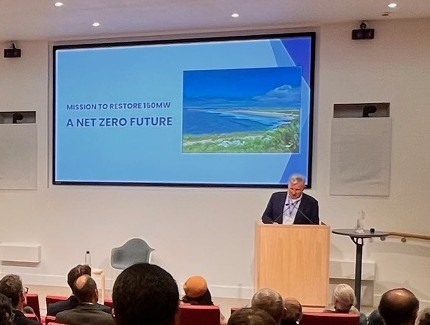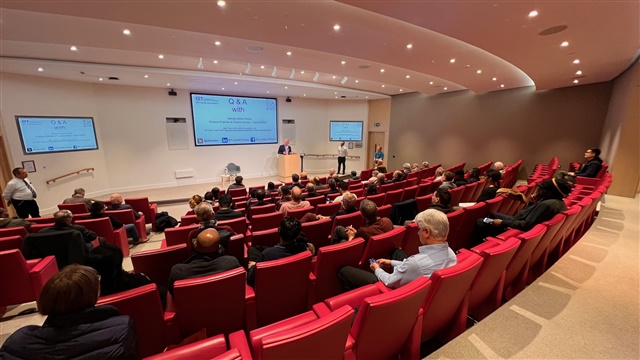The first IET, Central London Network, Wednesday evening talk for 2025 was really successful. George Ashley-Cound gave a brief talk on the multiple approaches he's taken to reducing energy use in or sourcing renewable energy, primarily solar power, for the hospitality industry. While his talk didn't have much technical detail into the variety of projects George had worked on, the quick review of each project, followed by a very long Q&A session, with a lot of interesting questions from the audience resulted in a very interesting session.
George's talk covered everything from monitoring energy use in a Cardiff ice skating rink to the use of perovskite solar cells. Along the way he gave examples of both local and global monitoring of energy use within a range of venues (the ice skating rink and a hotel), the Liverpool Innovation Centre that is managing to source 50% of its power use from solar panels on the roof, a Birmingham tower block that got a 100% return on investment in solar panels within 2.5 years, versus the normal 3-4 years, and a development in Trinidad and Tobago that led to an elegant, palm tree shaped solar panel design covering 63 acres, that also enables crop growth in the shade of the panels.
This primer on the range of projects, the financial aspects (both cost and Return on Investment), and some of the regulatory hurdles led to a discussion both with George and occasionally between the audience on all these topics. There were multiple questions on the use and installation of solar power facilities, how to make it dual use and what was necessary to increase the speed of ROI. Of course regs and if the government was a help or a hindrance was also a popular topic, with some discussion around how to encourage people to install or use solar and alternative energy sources. Over the course of the almost hour long Q&A, George kept fielding questions and managed to dive into some technical info that hadn't been covered in his talk directly, including the fact that Toyota dominates the second hand battery market for integrating used EV batteries as long term storage and that a 1 MW battery could effectively be cargo container sized, and therefore be relatively easily installed.
It was great to see such interest from the audience, many of whom seemed to be new attendees to the Central London Network's monthly evening events, and have such great participation.

